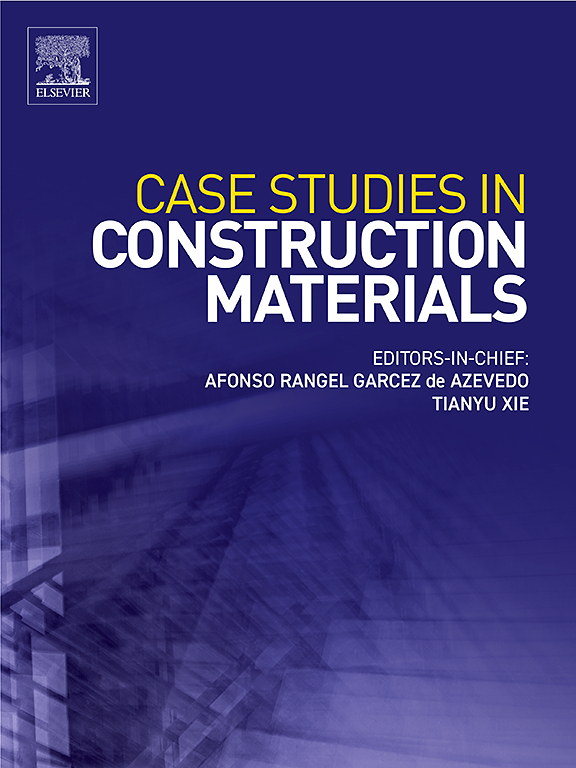基于ggbs的混凝土可持续优化:通过预测机器学习模型降低混合设计的风险
IF 6.6
2区 工程技术
Q1 CONSTRUCTION & BUILDING TECHNOLOGY
引用次数: 0
摘要
粉状高炉矿渣(GGBS)越来越被认为是传统硅酸盐水泥在混凝土中的可持续替代品。然而,由于复杂的材料相互作用,预测基于ggbs的混合料的抗压强度(C-S)仍然具有挑战性。本研究应用四种监督机器学习(ML)算法,决策树,随机森林,梯度增强和XGBoost,使用文献衍生数据集预测C-S。其中,XGBoost表现最佳(R²= 0.979),预测误差最小。SHAP分析表明,水泥掺量、养护龄期和水胶比是影响最大的特征。为了提高实用性,开发了基于用户自定义输入参数的实时强度预测图形用户界面(GUI)。提出的框架展示了机器学习在现实世界建筑场景中支持准确、高效和可持续混合设计的潜力。本文章由计算机程序翻译,如有差异,请以英文原文为准。
Sustainable optimisation of GGBS-based concrete: De-risking mix design through predictive machine learning models
Ground Granulated Blast Furnace Slag (GGBS) is increasingly recognised as a sustainable alternative to traditional Portland cement in concrete. However, predicting the compressive strength (C-S) of GGBS-based mixes remains challenging due to complex material interactions. This study applies four supervised machine learning (ML) algorithms, Decision Tree, Random Forest, Gradient Boosting, and XGBoost, to predict the C-S using a literature-derived dataset. Among these, XGBoost exhibited the best performance (R² = 0.979) with the lowest prediction error. SHAP analysis reveals that cement content, curing age, and water-to-binder ratio are the most influential features. To enhance practical utility, a graphical user interface (GUI) was developed for real-time strength prediction based on user-defined input parameters. The proposed framework demonstrates the potential of ML to support accurate, efficient, and sustainable mix design in real-world construction scenarios.
求助全文
通过发布文献求助,成功后即可免费获取论文全文。
去求助
来源期刊

Case Studies in Construction Materials
Multiple-
CiteScore
7.60
自引率
19.40%
发文量
842
审稿时长
63 days
期刊介绍:
Case Studies in Construction Materials provides a forum for the rapid publication of short, structured Case Studies on construction materials. In addition, the journal also publishes related Short Communications, Full length research article and Comprehensive review papers (by invitation).
The journal will provide an essential compendium of case studies for practicing engineers, designers, researchers and other practitioners who are interested in all aspects construction materials. The journal will publish new and novel case studies, but will also provide a forum for the publication of high quality descriptions of classic construction material problems and solutions.
 求助内容:
求助内容: 应助结果提醒方式:
应助结果提醒方式:


